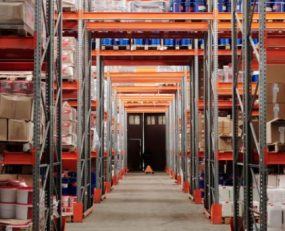
The emerging dynamics of US retail inventory may have significant implications for the global logistics market.
Recent numbers from major retailers such as Walmart and Target as well as smaller specialists such as Abercrombie & Fitch, show that they are carrying high inventory levels. Consumer demand is lower than these companies anticipated leading to an overhang of stock. Walmart observed in its most recent earnings release that shoppers were reducing their purchases of ‘General Merchandise’ due to the higher costs of food purchases in their stores. All complained about higher logistics costs. Target commented that “this year’s gross margin rate reflected higher markdown rates, driven largely by inventory impairments and actions taken to address lower-than-expected sales in discretionary categories, as well as costs related to freight, supply chain disruptions, and increased compensation and headcount in our distribution centers”.
The logical response to these issues is for shippers such as Target and Walmart to reduce demand for stock and thus for logistics services. In the US this may be happening. The key port of Los Angeles, which has been at the centre of much of the congestion that has driven-up logistics costs over the past two years, saw a year-on-year fall in volumes of 6.89% in April although the port was quick to assert that by historical standards throughput was still high, being “17% higher than the five-year April average of 390,000 TEUs”. The optimistic view of the Chief Executive of the port of Los Angeles, Gene Seroka, was that he saw “an earlier than normal peak season, combined with seasonal products, think of back to school, fall fashion, all of that should start combining at the end of June.” However, he also observed that the number vessels queuing outside the port had fallen to just 32, as compared to 109 at certain times in January.
If inventory is high across the consumer durables sector in the US then the implication is that there will be lower demand for freight. In turn, this strongly suggests that lower volumes into the US from trans-Pacific routes will increase available space on ships, trucks and aircraft and reduce the pricing power of freight transport providers. This will be compounded by the fall in the level of congestion, which in turn will release further quantities of items such as shipping containers and cross-dock capacity. All of this could lead to heavy falls in freight rates.
Source: Transport Intelligence, 26th May 2022
Author: Thomas Cullen